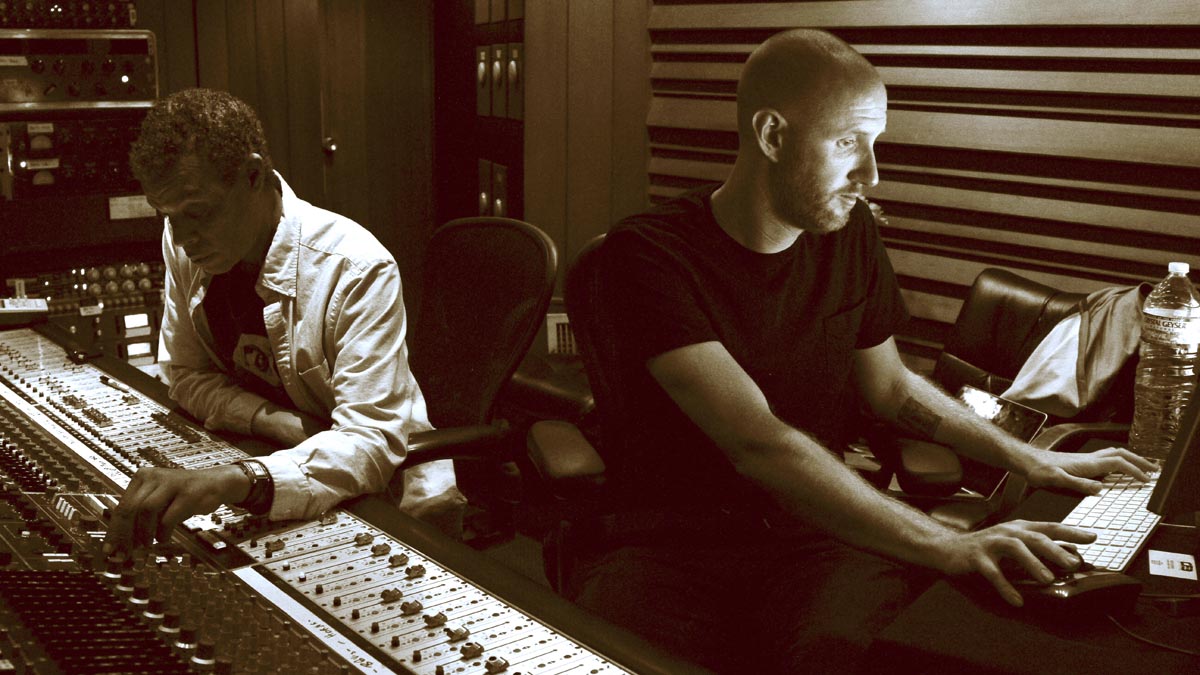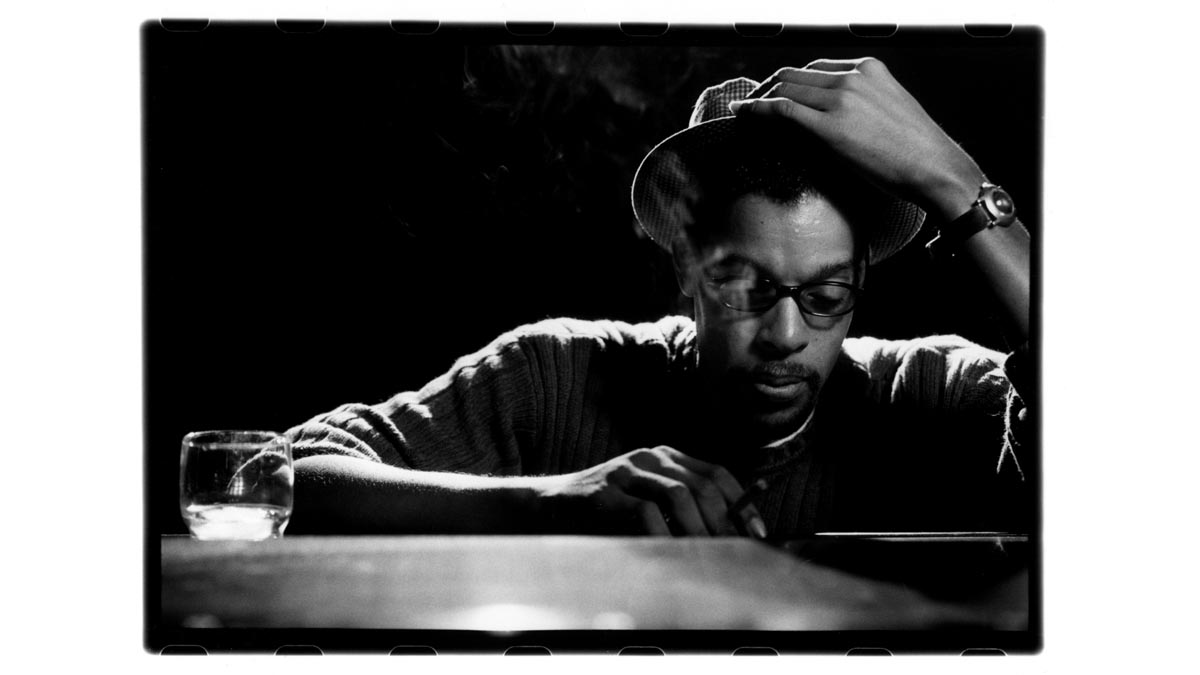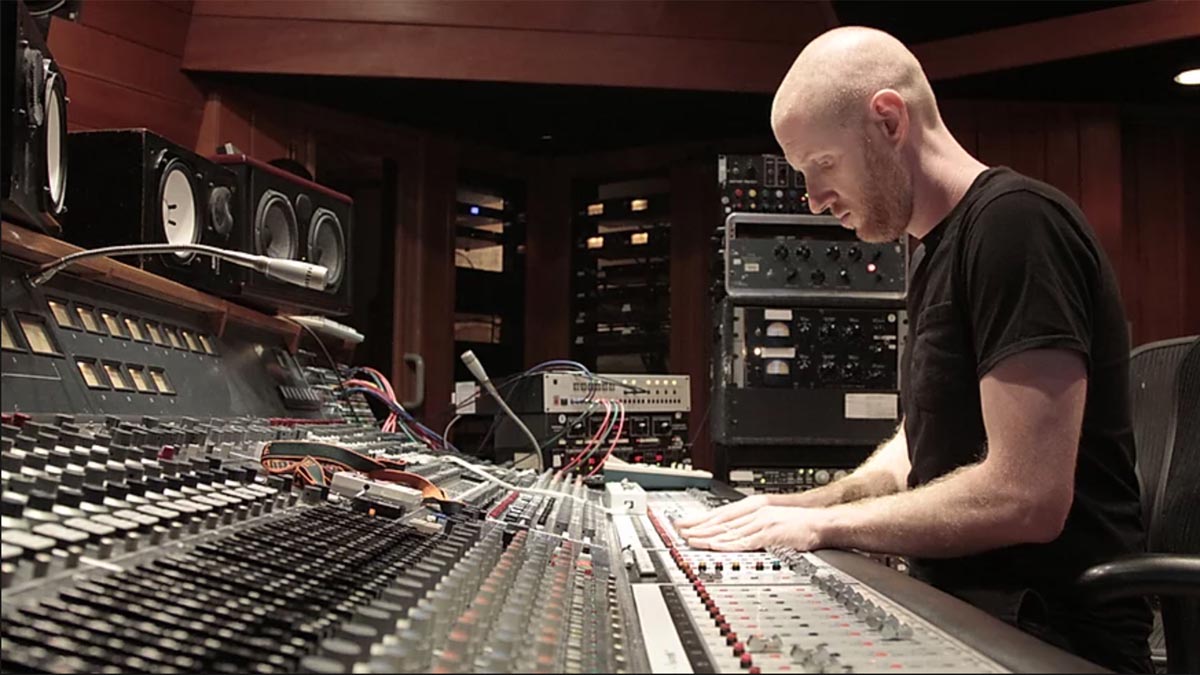Mixed by Humanz on mixing John Legend’s new album in lockdown: "Mixing at really low levels in the bedroom, you discover a different style”
How do you finish an album by a huge superstar when everyone’s at home? You draft in the Lennon and McCartney of mix engineers, that's how...

Mixed by Humanz are a rarity in mixing circles, a partnership between two incredibly successful mix engineers, each supplying expertise earned from working with some of the biggest names in music.
Gerry “The Gov” Brown is one half of the team, a man you simply have to call a 'studio legend'. He’s worked with artists including Madonna, Prince, Whitney Houston and Earth, Wind & Fire.
Bobby Campbell may be the younger member of the team but his career is almost as impressive, having mixed and recorded everyone from Logic to Michael Bolton.
Mixed by Humanz are the ultimate mix team, then, capable of taking on any job, no matter what the music genre and circumstance, an ethos that was pushed to the limit recently when the duo were asked to mix John Legend's latest hit album, Bigger Love, under the extraordinary shadow of Covid-19.
Gerry and Bobby were given a dozen tracks to complete in their home studios during lockdown, and separate from one another. And not only were they not in their pro studio of choice, but they also had to complete the project in just 12 days.
So, how on earth did they make it happen? Let’s find out...
Before we get into mixing John Legend's album remotely, why did you both decide to team up as Mixed by Humanz?
Get the MusicRadar Newsletter
Want all the hottest music and gear news, reviews, deals, features and more, direct to your inbox? Sign up here.
Bobby Campbell: “We work a lot at Raphael Saadiq's studio in North Hollywood. When Gerry and I linked up it was on the Andra Day album [Cheers to the Fall] and it was an eye-opening experience. Engineering is usually an individualistic working experience but we ended up having so much fun that it took over the whole process. We were getting such great work done that it didn't even feel like work!”
Gerry “The Gov” Brown: “So we just thought 'maybe we can mix together'. It's very rare that you find two engineers together but I equate it to this: if you have two people who can each build a house, if they build it together you can have a mansion. So Andra Day was the first project and then it began to snowball from there and we have done a whole host of stuff. I like the teamwork aspect of it a lot but I don't want it to be 'his name comes first' or 'my name comes first' so we came up with Mixed by Humanz. It's almost like a Lennon and McCartney type of thing!”

How did you first get involved with John Legend?
Gerry: “Originally I got a call from Raphael Saadiq who said, 'I have an album for you,' but he didn't tell me who it was! But I had my spies all over town [laughs] and found out it was for John's Christmas record [2018's A Legendary Christmas].
“He's such a lovely guy. I really got along with him and really respect him as an artist that knows what he wants and that was a beautiful thing.
“Then about a year ago I was working on another record and John came in and told me, 'I've got something for you'. This went on forever and then finally it [Bigger Love] was ready, but then came the pandemic! It was not even a question of who I would call [to help] - I just had to call Bobby, so we decided we would mix the record tag team, and we ended up having to do nine tracks together in 12 days.”
Wow, so how complete were the tracks and how did you get them together?
Bobby: “They would also come from all over the place. We had files coming in from people like [executive producer] Raphael Saadiq, [singer/songwriter/producer] Charlie Puth, [singer/songwriter/producer] Anderson .Paak, and [songwriter/producer] Ryan Tedder and his writing partner Zach Skelton.
We had files coming in from people like Raphael Saadiq, Charlie Puth, Anderson .Paak, and Ryan Tedder and his writing partner Zach Skelton.
“We were getting files from the best guys and ended up working with some amazing producers and songwriters. And a lot of these mixes were really on point and pretty nice before we got them, but John really trusts our ears - with his vocals first and foremost - and we were really the icing on the cake to make sure the whole album was consistent.”
And how did you maintain that consistency?
Gerry: “It's also something that John really trusts us with. I hate it when I work on an album and we have, say, two songs that sound different from the rest. I want it so people feel they have a complete sound landscape and we know how to achieve that. So we would agree on what reverbs we were going to use so it [the album] has the same level of warmth and character, and for the most part we have a lot of the same plugins, although there is some UAD stuff I don't have.
“Also we had the same monitors; I think it's so important because if you don't have the same monitors it's like a guessing game.”

Bobby: “Even before the pandemic I was looking for a great pair of monitors that I could take anywhere and I found the Focal Shape 40; I can take them anywhere and they sound great. So right at the beginning of this pandemic, when we started getting all of these files from John and we realised that we were limited to working from home, I immediately called my sales guy and said, 'I need you to send my buddy Gerry a pair of these speakers' so that way we were working with the same reference speakers.”
And how did the mix process work?
Gerry: “I would start one track and then Bobby would work on it or vice versa, and then we'd both agree on the final mix - we would both have to be happy.”
Bobby: “We send the Pro Tools session back and forth as I think it's important that both of us not only have a technical chance but a creative chance to touch the songs. I think that Gerry and I are very open and we communicate so clearly that having both of our ears on the mix before we send it to the client - it's almost like 'a sure thing'. We probably get a couple of notes back from the artist here and there, but we can be sure that it is 95-98% great.”
John really trusts our ears - with his vocals first and foremost - and we were really the icing on the cake to make sure the whole album was consistent.
Gerry: “John likes working with us because he has worked with other people where they are sending notes back and forth. With us we get maybe one note, maybe two; any more than that we feel like we have to step up our game!”
Would you say that each of you has different 'mix strengths'?
Bobby: “Both of us do have different things to offer. I concentrate on the low end and drums as I'm a drummer myself so I gravitate to that when I am working on a mix. I want to hear the kick drum and the snare and the way they react with the bass guitar and the whole rhythm section package. And then Gerry has taught me so many things about mixing vocals and where they should be and the EQ and reverbs. He has definitely helped to pinpoint that – mixing vocals for anything.”
How else did the process differ from mixing in a large studio?
Bobby: “We were mixing at very low levels. You go into a big studio and put it on the mains and you always want to listen loud as it's important in the mid range to be able to make sure you are not getting too many harsh frequencies in the vocals. But mixing at really low levels like we have been doing in our bedrooms and living rooms, you discover a different style of mixing. It does give you some more clarity as far as the vocal and the vocal automation and where the levels should be.”
What was the biggest challenge overall?
Bobby: “Just the fact that we were in lockdown. Everyone has been feeling the isolation blues - thoughts and emotions that you are just not used to. And Gerry and I have always been the types of engineers who say we want our home to be our home and the studio to be work. It's a whole other experience when you are at home. There are all these distractions and all on top of the psychological aspect of being in quarantine.”
What have you both learned from the experience?
Gerry: “The thing about this project was that because we were on a tight schedule there was no time to really overthink anything. You have to go by the emotion that the song is bringing to us. I'm very emotional when it comes to songs. It's not just pushing buttons; I really try and listen to what the artist is trying to say in the song and that's how we achieved this.”
Bobby: “For me it was nice to push over the threshold of being able to work professionally from home. I have never experienced that and it's nice to know I can do it - we were able to pretty much do 99% of this album in the box.
There will always be reasons to work in nice, acoustically treated rooms where it makes our job ten times easier.
“But there will always be reasons to work in nice, acoustically treated rooms where it makes our job ten times easier. We primarily use a room over at Raphael Saadiq's and it's a really great room, so there are times where we want to get back in the big room and get our hands on some analogue gear like running the bass through the Fairchild compressor.
“Also, for Gerry and me it's really tightened up our communication skills in a really positive way and when we get back in the studio together that will cross over.”
Gerry: “For me it was just such a joy. I loved the music and everybody involved. John creates this team of people and I think it's one of the most positive mixing experiences that I have had to be quite honest.”


Andy has been writing about music production and technology for 30 years having started out on Music Technology magazine back in 1992. He has edited the magazines Future Music, Keyboard Review, MusicTech and Computer Music, which he helped launch back in 1998. He owns way too many synthesizers.
"Reggae is more freeform than the blues. But more important, reggae is for everyone": Bob Marley and the Wailers' Catch a Fire, track-by-track
“Part of a beautiful American tradition”: A music theory expert explains the country roots of Beyoncé’s Texas Hold ‘Em, and why it also owes a debt to the blues










